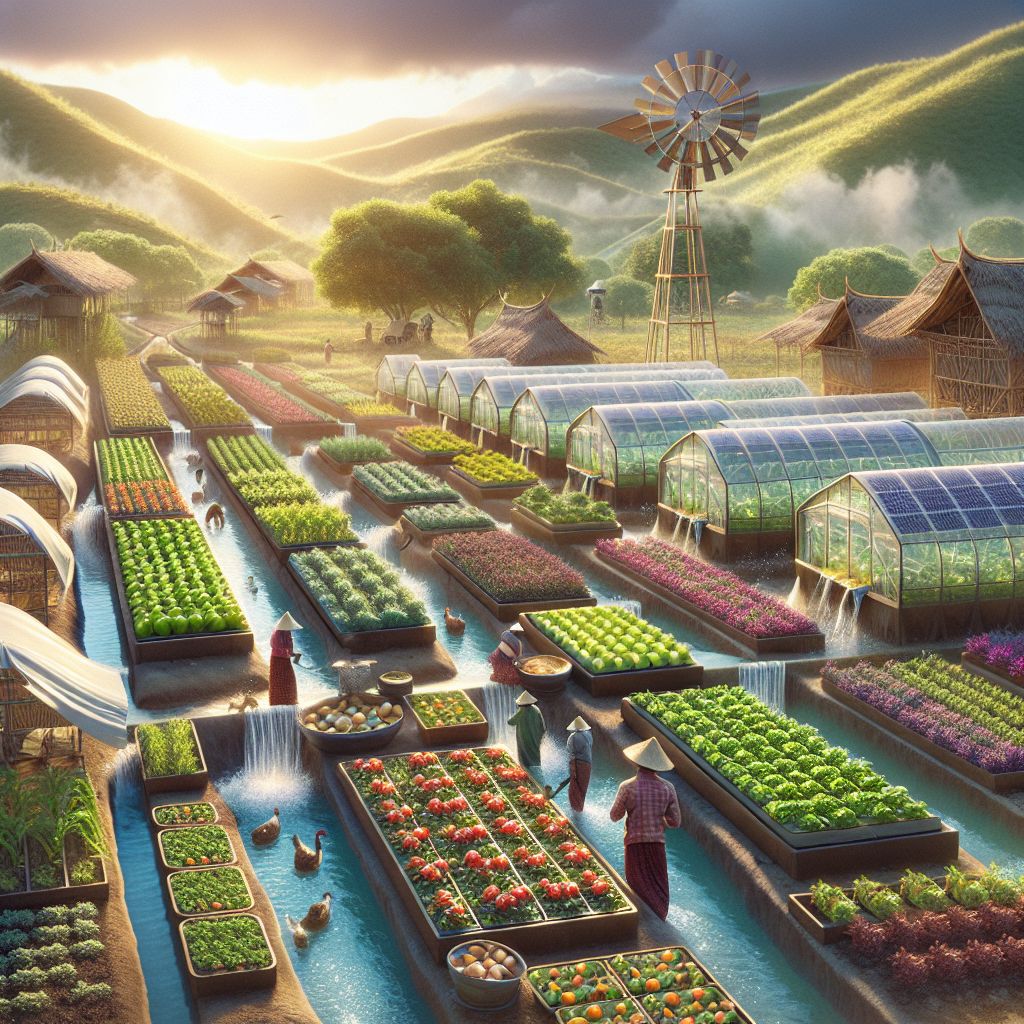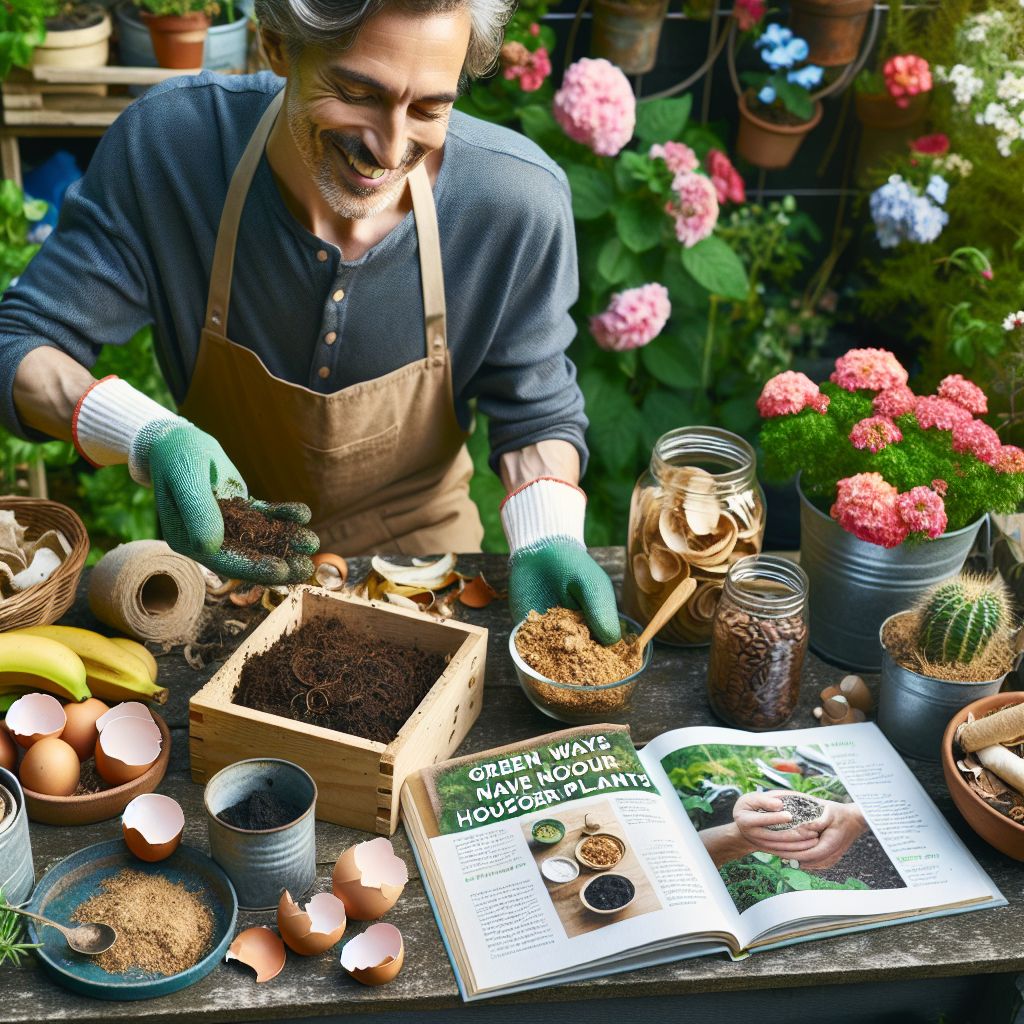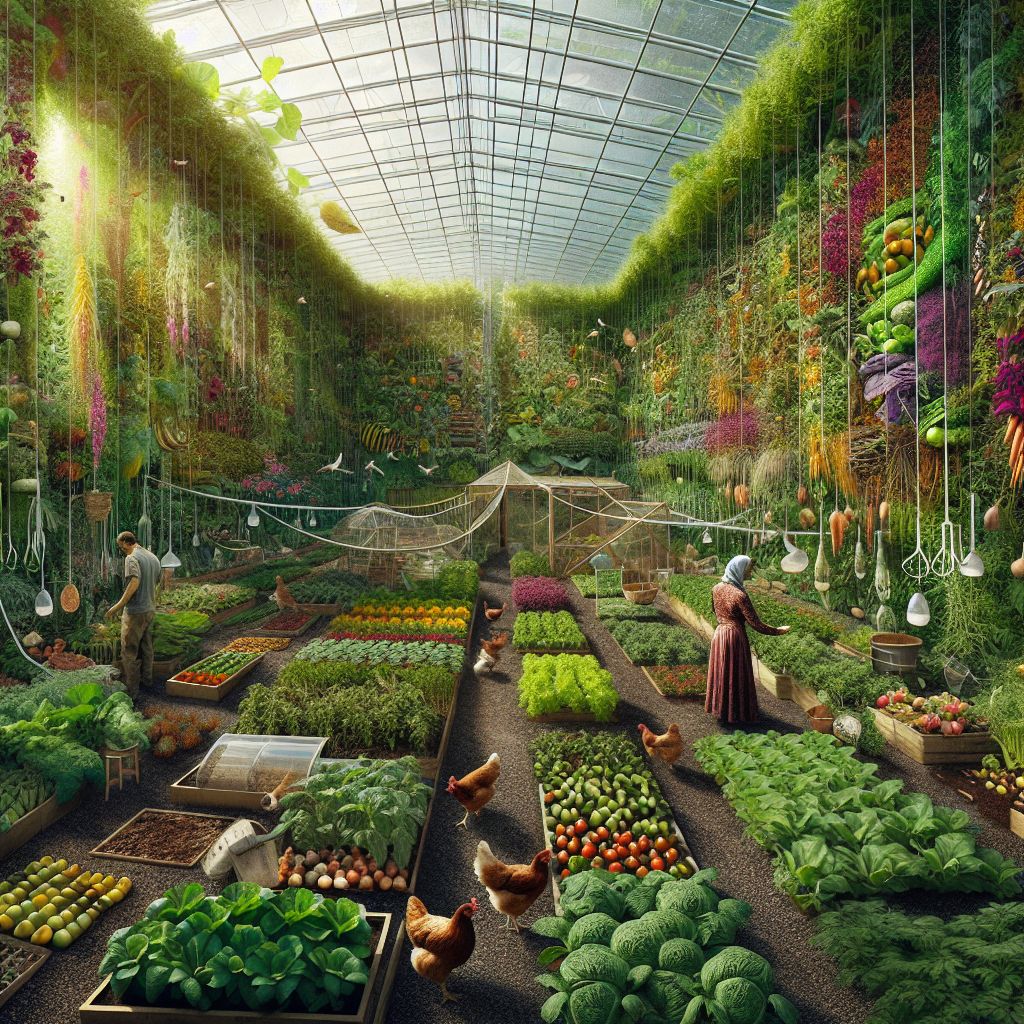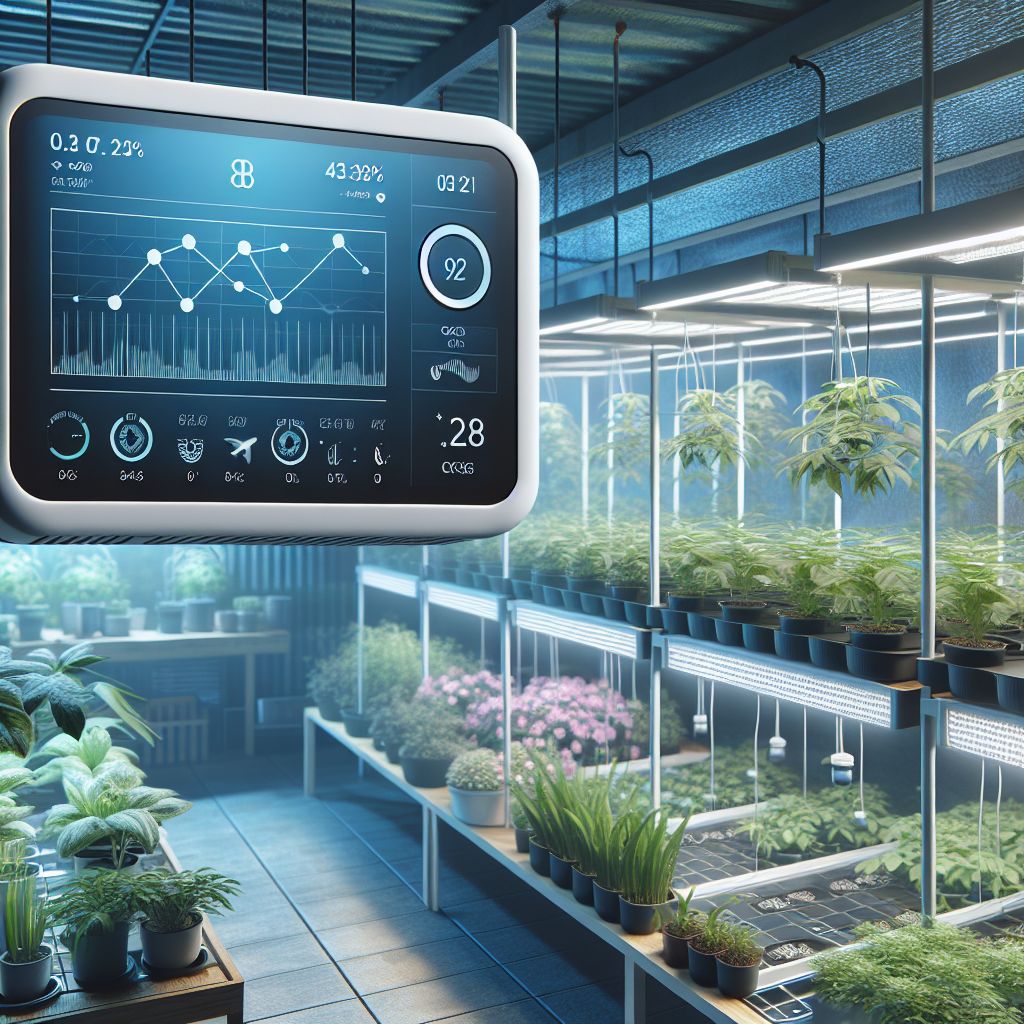Key Takeaways
- Understanding your greenhouse’s climate is crucial for year-round gardening success.
- Start with cool weather crops like leafy greens and root vegetables in the spring.
- Use essential tools like thermometers and humidity gauges to monitor conditions.
- Transition seedlings carefully from indoors to the greenhouse to avoid shock.
- Plan your plant layout to optimize space and ensure each plant gets the care it needs.
The ultimate list of greenhouse Crops for year round produce
| Cool Season Crops | Warm Season Crops |
|---|---|
| Leafy Greens | Tomatoes |
| – Lettuce | Peppers |
| – Spinach | – Sweet Peppers |
| – Kale | – Hot Peppers |
| – Swiss Chard | Eggplants |
| – Arugula | Cucumbers |
| – Endive | Squash |
| – Zucchini | |
| Root Vegetables | – Pumpkins |
| – Carrots | Beans |
| – Beets | – Green Beans |
| – Radishes | – Pole Beans |
| – Turnips | – Bush Beans |
| – Rutabagas | Peas |
| – Parsnips | Melons |
| – Cantaloupe | |
| Brassicas | – Watermelon |
| – Broccoli | Corn |
| – Cauliflower | |
| – Brussels Sprouts | |
| – Cabbage | |
| – Kohlrabi | |
| Alliums | |
| – Leeks | |
| – Green Onions | |
| Herbs | |
| – Parsley | |
| – Cilantro |
Key Points:
- Cool season crops can be grown through winter with minimal heating.
- Warm season crops require higher temperatures and may need supplemental lighting.
- Rotate crops seasonally to make best use of space.
- Factors like location, greenhouse type, and heating/cooling systems determine what’s possible.
The Secret to a Lush Greenhouse Garden All Year Long
Imagine stepping into a lush oasis of vibrant plants and fresh vegetables no matter the season outside. That’s the magic of a greenhouse that’s managed well. But it’s not just about throwing seeds into pots and hoping for the best. It’s about understanding the environment inside your greenhouse and working with nature to create a self-sustaining ecosystem.
Because the greenhouse is a controlled environment, you can manipulate conditions to suit a variety of plants. This means with the right knowledge and tools, you can enjoy fresh produce year-round. So, let’s dive in and discover how to make your greenhouse thrive through every season.
Understanding Your Greenhouse Climate
The first step to successful greenhouse gardening is understanding the microclimate within your glass walls. Your greenhouse is its own little world, and the conditions inside can vary greatly from the outdoors. Monitoring temperature, humidity, and light levels is essential. For this, you’ll need a few tools:
- A reliable thermometer to keep track of the temperature.
- A humidity gauge to monitor moisture levels in the air.
- Light meters to ensure your plants are getting the right amount of sunlight.
Most importantly, pay attention to the signs from your plants. If leaves are wilting or yellowing, it could be a sign of too much heat or not enough water. Healthy plants are the best indicators of a well-maintained greenhouse climate.
Essential Tools for Year-Round Cultivation
To keep your greenhouse functioning all year, you’ll need more than just basic tools. Consider investing in:
- Heating mats or a greenhouse heater for those colder months.
- Cooling systems or shade cloths for when the summer heat peaks.
- Automated watering systems to maintain consistent moisture levels.
- Grow lights to supplement shorter daylight hours in winter.

“Greenhouse Floor Mats and Heating …” from warmset.com
With these tools in your arsenal, you can create the ideal environment for a variety of plants, regardless of what’s happening outside.
Spring into Greenhouse Gardening
Spring is a time of renewal and growth, making it the perfect season to start your greenhouse gardening journey. As the frost begins to thaw and the days get longer, your greenhouse is ready to be filled with life.
Start your spring planting with cool weather crops that can withstand the still-chilly nights. Think leafy greens like spinach and kale, and root vegetables such as carrots and beets. These plants don’t mind a bit of cold and will give you a head start on the growing season.
Remember to keep an eye on nighttime temperatures and be ready to provide extra warmth if needed. A simple heating mat under your seed trays can make all the difference.
Cool Weather Crops That Thrive in Early Year
When selecting plants for your spring greenhouse, focus on those that prefer cooler temperatures. Here are some great options: For more insights, explore our guide on automated greenhouse systems for high-yield crop production.
- Spinach: This leafy green can germinate in soil as cool as 35°F.
- Kale: Hardy and nutritious, kale grows well in cool environments.
- Radishes: Quick to harvest, radishes are ideal for early spring planting.
- Lettuce: A variety of lettuces can be grown, providing fresh salads.
These crops will not only tolerate the cooler spring climate but will actually thrive in it, giving you a bountiful harvest before summer even begins.
Transitioning Indoor Seedlings to the Greenhouse
Many gardeners start seeds indoors to get a jump on the growing season. When it’s time to move these seedlings to the greenhouse, it’s critical to do so gradually. This process, known as hardening off, acclimates your plants to their new environment and prevents shock.
- Begin by placing your seedlings in the greenhouse for a few hours each day.
- Gradually increase their time inside over the course of a week or two.
- Ensure they are not exposed to extreme temperatures or direct sunlight at first.
By taking the time to transition your plants properly, you’ll ensure they continue to grow strong and healthy in their new home.

Autumn Harvests: Extending the Season’s Yield
As the lush greenery of summer begins to wane, autumn ushers in a new phase for your greenhouse. This is the time to introduce new crops that will flourish in the cooler, less intense sunlight of the coming months. It’s also a time to reap the rewards of your summer labor and to extend the bounty with a little planning and care.
Introducing New Crops Post-Summer Peak
After the summer peak, your greenhouse is primed for a second wave of planting. Autumn is ideal for growing a variety of vegetables that prefer cooler temperatures. Consider planting: For more information, explore our year-round greenhouse growing guide.
- Brussels sprouts: These thrive in cooler temperatures and can be harvested until frost.
- Swiss chard: With its vibrant colors, Swiss chard is both beautiful and cold-tolerant.
- Garlic: Plant cloves now and they’ll be ready for a summer harvest.
- Peas: A late crop of peas can be squeezed in before the winter freeze.
These crops can take a little frost, so don’t worry if the temperature dips. They might just get sweeter with a touch of cold! For more insights on cultivating plants in cooler climates, check out our guide on heavy-duty greenhouse kits that can withstand the elements.
When introducing new crops, remember to rotate your planting areas to prevent soil depletion and reduce the risk of disease. This also helps to maintain nutrient-rich soil that will support plant growth.
Managing Temperatures and Light as Days Shorten
As days get shorter and temperatures drop, managing your greenhouse becomes even more important. You’ll need to ensure that your plants still receive enough light and warmth to continue growing. For more information on maintaining the ideal conditions, consider reading about advanced automated greenhouse technology that can help optimize your greenhouse environment.
- Adjust your shading to allow as much light in as possible during the day.
- Consider using grow lights to supplement shorter daylight hours.
- Keep an eye on the thermometer and be ready to turn on heaters if necessary.
Remember, the goal is to mimic the ideal growing conditions for your plants, even as the season changes.
Monitoring the weather forecast is also crucial during this transition period. Sudden cold snaps can be detrimental to your plants, so stay ahead of the weather to keep your greenhouse cozy.
Winter Wonders: Cold-Resistant Varieties and Warm Beds
Winter doesn’t have to mean the end of your gardening. With the right preparation, your greenhouse can continue to be a productive haven even when the snow falls. It’s all about choosing the right plants and providing them with the warmth they need to thrive.
Insulation is key during the colder months. You can use bubble wrap or thermal blankets to line the inside of your greenhouse, trapping heat and keeping out the cold. A small investment in insulation can lead to big rewards in plant productivity.
“Even in the dead of winter, your greenhouse can be a beacon of growth. By selecting cold-resistant varieties and ensuring a warm environment, you can enjoy fresh produce year-round.”
Root Vegetables and Hardy Greens That Endure the Chill
Some plants are particularly suited to the colder temperatures of winter. Root vegetables like carrots and parsnips, as well as hardy greens like kale, can survive and even thrive in a winter greenhouse. These plants are less sensitive to the cold and can be a great source of fresh vegetables during the winter months.
Here are some more examples of cold-resistant plants:
- Leeks: These can be left in the ground and harvested as needed.
- Winter lettuce: Certain varieties are bred to withstand cooler temperatures.
- Collard greens: These nutrient-rich greens prefer cooler weather.
- Beets: A late planting can yield a winter or early spring harvest.
Installing Insulation and Supplemental Heating Options
Keeping your greenhouse warm in winter is a balance between insulation and active heating. While insulation can prevent heat loss, sometimes it’s not enough on its own. This is where supplemental heating comes into play.
- Electric heaters are a reliable option but require a power source and can increase your energy bills.
- Paraffin heaters are an alternative that can provide a steady source of heat without electricity.
- Compost heating is a sustainable method where the heat generated by decomposing organic matter is used to warm the greenhouse.
Choose the heating method that works best for your setup and budget, but remember to always prioritize safety when using heaters in your greenhouse. For more information on greenhouse gardening, consider reading about the 50 best greenhouse plants to cultivate.
Harvesting Success: Tips and Tricks for Every Season
Success in year-round greenhouse gardening is about more than just planting and watering. It’s about understanding the needs of your plants and adjusting your care to meet those needs. Here are some tips to help you harvest success in every season:
- Keep a gardening journal to track what works and what doesn’t, so you can improve your methods each year.
- Use companion planting to naturally deter pests and promote growth.
- Regularly test your soil and amend it with compost to keep it nutrient-rich.
- Monitor plants for signs of stress or disease and address issues promptly.
With these practices, you’ll not only grow plants, but you’ll also cultivate knowledge and experience that will make each year more productive than the last. For more detailed guidance, consider exploring this comprehensive greenhouse growing guide for beginners.
“The most rewarding part of greenhouse gardening is the continual learning process. Each season brings new challenges and opportunities to grow as a gardener.”
Pruning Practices for Continued Growth
Pruning isn’t just about keeping your plants looking tidy, it’s a vital practice for encouraging healthy growth. By removing dead or diseased foliage, you allow your plants to focus their energy on producing new growth. Learn more about the best greenhouse plants to grow each year and how to maintain them.
- Always use clean, sharp pruning shears to make clean cuts.
- Prune dead leaves and stems regularly to prevent disease spread.
- Pinch back herbs and leafy greens to encourage bushier growth.

“Pruning Protected Crops: A Guide …” from www.chelseagreen.com
Most importantly, be gentle with your plants. Pruning can be stressful for them, so it’s important to do it carefully and at the right time. For most plants, the best time to prune is in the late winter or early spring before new growth begins.
The Role of Pollination in a Controlled Environment
- Introduce pollinator-friendly plants to attract beneficial insects.
- Consider manually pollinating plants using a small brush or cotton swab.
- Ensure proper ventilation to allow for the movement of air, which aids in pollination.
Pollination is vital for fruit and seed production, and in a greenhouse, it’s something you’ll need to manage actively. Unlike an open garden where bees and other pollinators are free to come and go, a greenhouse can limit their access. Therefore, you might need to get creative.
Some greenhouse gardeners introduce pollinators like bees or butterflies into their space. Others take a hands-on approach, using a small paintbrush to transfer pollen from one flower to another. This can be a delicate process, but it’s also a wonderful opportunity to connect with your plants.
Good airflow is also essential for pollination. Fans can help circulate air and mimic the natural breezes that would otherwise carry pollen from plant to plant. Just remember, pollination is about more than just fruit—it’s about the future of your plants, ensuring they can reproduce and provide seeds for next season’s garden.
And let’s not forget, some plants are self-pollinating, like tomatoes and peppers. Even so, giving them a gentle shake to release the pollen can improve your yield.
Pest Control: Keeping Your Greenhouse Healthy
Even the most carefully maintained greenhouse can fall prey to pests. Aphids, spider mites, and whiteflies are just a few of the unwelcome visitors that might find their way into your garden. But fear not, there are ways to manage these pests organically and effectively.
Firstly, keep a close eye on your plants. Regular inspections can catch infestations early, when they’re easiest to control. If you do spot pests, remove them by hand or use a gentle stream of water to dislodge them. For more persistent problems, natural predators like ladybugs or praying mantises can be introduced to help keep the pest population in check.
Preventative measures are also key. Keep your greenhouse clean, remove plant debris, and avoid overwatering, as damp conditions can attract pests. And remember, a healthy plant is less likely to succumb to pest problems, so keep your garden well-fed and stress-free.
Frequently Asked Questions (FAQ)
Greenhouse gardening can be a rewarding endeavor, providing fresh produce throughout the year. However, it comes with its own set of questions and challenges. Here are some frequently asked questions to help guide you on your path to a thriving greenhouse garden.
What Are the Easiest Year-Round Greenhouse Crops for Beginners?
If you’re just starting out with greenhouse gardening, you’ll want to choose crops that are forgiving and easy to grow. Some of the best options include greenhouse gardening for beginners.
Lettuce: It grows quickly and doesn’t require a lot of attention.
Herbs: Basil, chives, and parsley are all great choices that can be used in a variety of dishes.
Spinach: This leafy green is hearty and can be harvested multiple times.
These plants are not only easy to grow but also versatile in the kitchen, making them perfect for beginners looking to enjoy the fruits of their labor.
How Do I Maintain Optimal Greenhouse Humidity Levels?
Too much humidity can lead to mold and disease, while too little can stress your plants. To maintain optimal levels:
Use a hygrometer to monitor the humidity in your greenhouse.
Utilize ventilation, such as roof vents or exhaust fans, to reduce excess moisture.
Water your plants in the morning so excess moisture can evaporate throughout the day.
Can I Grow Fruit Trees in My Greenhouse All Year?
Yes, with the right conditions, you can grow fruit trees in your greenhouse all year. Dwarf varieties are especially well-suited for greenhouse cultivation due to their smaller size. You’ll need to ensure they receive enough light and are pollinated properly, either by hand or with the help of pollinators. Additionally, fruit trees will require pruning and care to remain productive in a greenhouse environment.
What Is the Best Way to Organize Plants in a Greenhouse?
Organization is key to maximizing space and ensuring each plant receives the light and airflow it needs. Consider these tips:
Place taller plants in the back or on the north side so they don’t shade smaller plants.
Use shelving or hanging baskets to take advantage of vertical space.
Group plants with similar light and water requirements together to simplify care.
How Do I Optimize Pollination in My Greenhouse?
To optimize pollination, consider implementing IoT-enabled air movement control in your greenhouse.
Encourage beneficial insects by planting flowers that attract them.
Hand-pollinate as needed, especially for plants like tomatoes and peppers.
Ensure proper air circulation to mimic the natural movement of pollinators.





